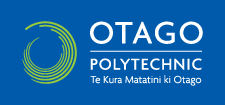This introductory tutorial is not intended to provide exhaustive support on how and what to blog. That's up to you. Remember, Google is your friend and a few searches will uncover a wealth of resources and tips on how to blog.
However, new bloggers might want to become familiar with some of the pitfalls or no-nos regarding netiquette for blogging before they start. For example, no posting of photos that which you don't have rights to publish, citing other people’s works properly if you embed material, sensitivity in commenting, not defaming people, i.e. remember it is a public media channel. If you would not say something to a TV news reporter with a camera running, don't say it on your blog. This is especially important when you realise that if you post something offensive (even inadvertently) and then delete it, there is still a chance that people can find and read that content courtesy of search engine’s archiving efforts. Material posted on the web persists long after it was written and posted.
Also a brief word about online vandalism and Internet trolls, which may have bearing on how you manage you blog comments and interact in open community websites. A troll is someone who posts inflammatory or off-topic messages in online forums or blog comments with the primary intent of provoking readers into an emotional response. Very often, the motivation for this kind of vandalism is a form of "recognition". It's important to remember the adage that "sometimes trolls live under bridges, but not everyone living under a bridge is a troll". Many open communities promote the message: "Please do not feed the trolls" because responding to posts intended to provoke emotional responses may result in fanning the fire or making matters worse.
Below we provide a few optional links for those who want to find out a little more about blogging.
Web Resources
Tips and blogging guidelines
|

